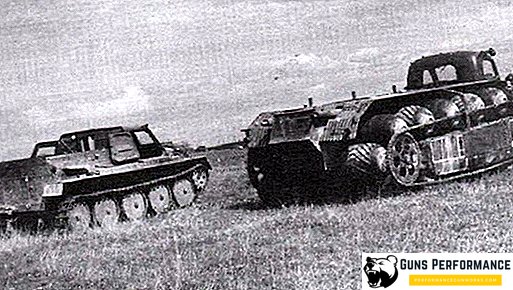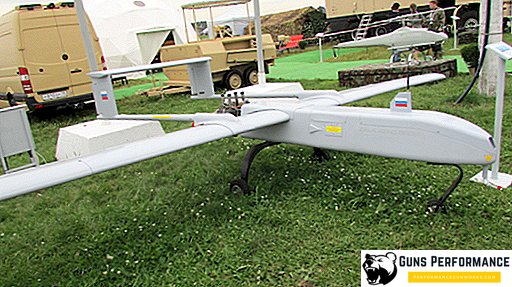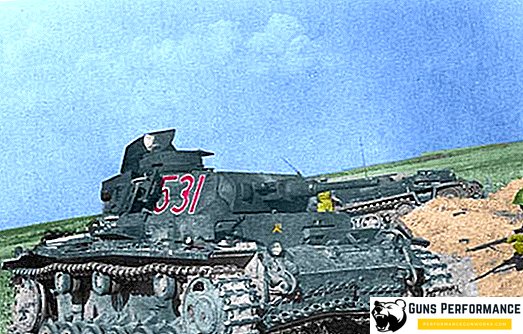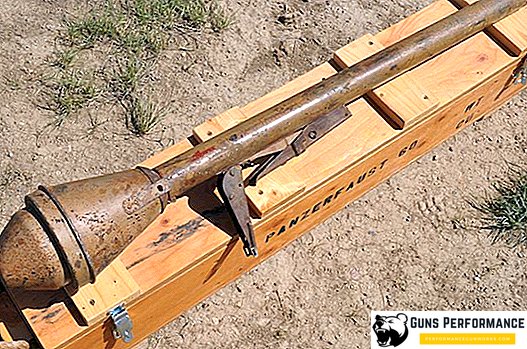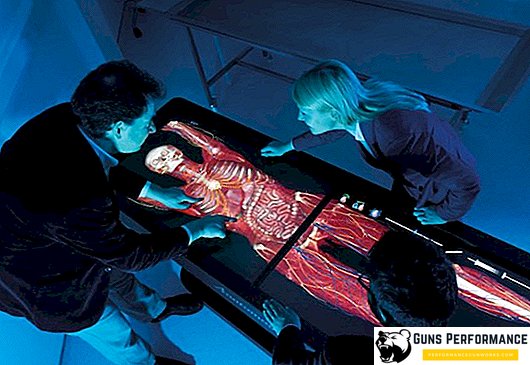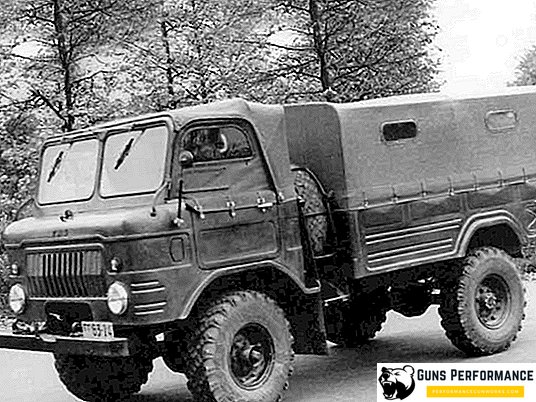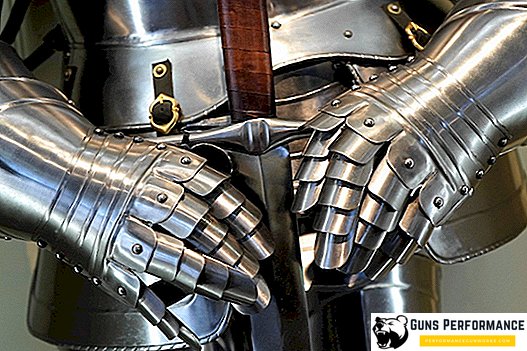
Few other types of weapons left a similar mark in the history of our civilization. For millennia, the sword was not just a murder weapon, but also a symbol of courage and valor, the constant companion of the warrior and the subject of his pride. In many cultures, the sword personified dignity, leadership, strength. Around this symbol in the Middle Ages, a professional military estate was formed, its notions of honor were developed. The sword can be called the real embodiment of war, the varieties of these weapons are known to almost all cultures of antiquity and the Middle Ages.
Knight's sword of the Middle Ages symbolized, including the Christian cross. Before being knighted, the sword was kept at the altar, clearing the weapon of worldly filth. During the initiation ceremony, the priest handed the weapon to the warrior.

With the help of the sword knighted, this weapon was necessarily part of the regalia used in the coronation of the crowned heads of Europe. The sword is one of the most common symbols in heraldry. We see him everywhere in the Bible and the Koran, in medieval sagas and in modern fantasy novels. However, despite its enormous cultural and social significance, the sword primarily remained a melee weapon, with which it was possible to send the enemy to the next world as quickly as possible.

The sword was not available to everyone. Metals (iron and bronze) were rare, costly, and making a good blade took a lot of time and skilled labor. In the early Middle Ages, it was often the presence of a sword that distinguished the leader of a detachment from an ordinary commoner warrior.
A good sword is not just a strip of forged metal, but a complex composite product consisting of several pieces of steel that is different in characteristics and correctly processed and hardened. European industry was able to ensure the mass release of good blades only by the end of the Middle Ages, when the value of cold arms began to decline.

A spear or a battle ax was much cheaper, and learning to own them was much easier. The sword was the weapon of the elite, professional warriors, uniquely status thing. To achieve real mastery, the swordsman had to train daily, for many months and years.
Historical documents that have come down to us say that the cost of a sword of average quality could equal the price of four cows. Swords work of famous blacksmiths valued much more. A weapon of the elite, decorated with precious metals and stones, cost a fortune.
First of all, the sword is good for its versatility. It could be effectively used on foot or on horseback, for attack or defense, as a primary or secondary weapon. The sword was perfect for personal protection (for example, on trips or in court fights), it could be worn with itself and, if necessary, quickly applied.

The sword has a low center of gravity, which greatly facilitates its management. Fencing with a sword is much less tedious than swinging a club of similar length and mass. The sword allowed the fighter to realize his advantage not only in strength, but also in dexterity and speed.
The main drawback of the sword, from which gunsmiths tried to get rid of throughout the history of the development of these weapons, was its small "penetrating" ability. And the reason for this was also the low location of the center of gravity of the weapon. Against a well-armored opponent it was better to use something else: a battle ax, a chisel, a hammer, or a regular spear.

Now a few words should be said about the very concept of this weapon. The sword is a type of melee weapon that has a straight blade and is used to deliver cuts and thrusts. Sometimes the length of the blade, which must be at least 60 cm, is added to this definition. But the short sword was sometimes even shorter, as examples are the Roman gladius and the Scythian akinak. The largest two-handed swords reached almost two meters in length.

If the weapon has one blade, then it should be attributed to broadswords, and a weapon with a curved blade - to the saber. The famous Japanese katana is not really a sword, but a typical saber. Also, swords and rapiers should not be counted as swords, they are usually distinguished into separate groups of cold weapons.
How the sword works
As mentioned above, the sword is a direct double-edged melee weapon designed for applying piercing, chopping, cutting and slashing-piercing blows. Its design is very simple - it is a narrow strip of steel with a grip at one end. The shape or profile of the blade has changed throughout the history of this weapon; it depended on the combat technique that dominated at one time or another. Combat swords of different eras could “specialize” in chopping or stabbing.

The division of cold weapons into swords and daggers is also somewhat arbitrary. It can be said that the short sword had a longer blade than the dagger itself - but it is not always easy to draw a clear boundary between these types of weapons. Sometimes the classification is based on the length of the blade, in accordance with it there are:
- Short sword Blade length 60-70 cm;
- Long sword The size of his blade was 70-90 cm, and it could be used by a footman and a mounted warrior;
- Cavalry sword. Blade length over 90 cm.
The weight of the sword varies widely: from 700 grams (gladius, akinak) to 5-6 kg (large flamberg or espadon).
Also, swords are often divided into one-handed, one-and-a-half and two-handed. A one-handed sword usually weighed from one to one and a half kilograms.

The sword consists of two parts: the blade and the hilt. The cutting edge of the blade is called the blade, the blade ends with a tip. As a rule, he had a stiffener and a long groove designed to lighten the weapon and give it extra stiffness. The bare part of the blade adjacent directly to the guard is called the ricasso (heel). The blade can also be divided into three parts: the strong part (often it was not sharpened at all), the middle part and the point.

The hilt (in medieval swords, she often had the appearance of a simple cross) is part of the hilt, the handle, as well as the pommel, or an apple. The last element of the weapon is of great importance for its correct balancing, and also prevents the hand from sliding. The cross also performs several important functions: it does not allow the arm to slide forward after striking, protects the arm from hitting the opponent’s shield, and the crossbar was used in some fencing techniques. And only last of all the cross guard protected the swordsman’s hand from the blow of the enemy’s weapons. So, at least, follows from the medieval fencing allowances.

An important characteristic of the blade is its cross section. There are many options for the section, they have changed with the development of weapons. Early swords (at the time of the barbarians and Vikings) often had a lenticular cross section, which was more suitable for cutting and slashing. As the armor developed, the rhombic section of the blade became more and more popular: it was more rigid and more suitable for injections.
The blade of the sword has two tapers: in length and in thickness. This is necessary to reduce the weight of the weapon, improve its controllability in battle and increase the effectiveness of its use.

The balance point (or equilibrium point) is the center of gravity of the weapon. As a rule, it is located at a finger distance from the guard. However, this characteristic can vary within fairly wide limits depending on the type of sword.
Speaking about the classification of this weapon, it should be noted that the sword is a “piece” product. Each blade was made (or selected) for a specific fighter, his height and length of arms. Therefore, there are no two completely identical swords, although the blades of the same type are in many ways similar.

The invariable accessory of the sword was the sheath - a case for carrying and storing this weapon. The sheath for the sword was made of various materials: metal, leather, wood, fabric. In the lower part they had a tip, and in the upper part they ended in a mouth. Usually these elements were made of metal. The sheath for the sword had various devices that made it possible to fasten them to a belt, clothing or saddle.

The birth of the sword - the era of antiquity

It is not known exactly when the man made the first sword. Their prototype can be considered wooden mace. However, the sword in the modern sense of the word could arise only after people began to melt metals. The first swords were probably made of copper, but very quickly this metal was replaced by bronze, a more durable alloy of copper and tin. Constructively the oldest bronze blades differed little from their late steel brethren. Bronze is excellent against corrosion, so today we have a large number of bronze swords found by archaeologists in different regions of the world.

The oldest known sword today was found in one of the burial mounds in the Republic of Adygea. Scientists believe that it was made for 4 thousand years before our era.
It is curious that before burial, along with the host, bronze swords were often symbolically bent.
Bronze swords have properties that are in many ways different from steel ones. Bronze does not spring, but it can bend without breaking. To reduce the likelihood of deformation, bronze swords were often equipped with impressive ribs. For the same reason, it is difficult to make a big bronze sword, usually such a weapon had relatively modest size - about 60 cm.
Bronze weapons were made by casting, so there were no special problems to create blades of complex shape. Examples include the Egyptian khopesh, the Persian kopis and the Greek mahaira. True, all these samples of cold arms were cutlass or swords, but not swords. Bronze weapons were poorly suited for penetration of armor or fencing, blades made of this material were more often used for delivering cutting than piercing blows.
Some ancient civilizations used a large bronze sword. During the excavations on the island of Crete, blades more than a meter long were found. It is believed that they were made around 1700 BC.
Iron swords learned to make around the VIII century BC, and in the V century they were already widely adopted. although bronze was used along with iron for many centuries. Europe quickly switched to iron, because in this region it was much more than the tin and copper deposits needed to create bronze.
Among the now known blades of antiquity can be distinguished Greek xiphos, Roman gladius and spatu, Scythian sword akinak.

Xiphos is a short sword with a leaf-shaped blade, the length of which was approximately 60 cm. It was used by the Greeks and Spartans, later this weapon was actively used in the army of Alexander the Great, the soldiers of the famous Macedonian phalanx were armed.

Gladius is another famous short sword, which was one of the main weapons of heavy Roman infantry - legionnaires. Gladius had a length of about 60 cm and the center of gravity, shifted to the handle due to the massive pommel. With this weapon it was possible to inflict both slashing and stabbing blows; the gladius was especially effective in close formation.

Spata is a big sword (about a meter long), which, apparently, first appeared among the Celts or Sarmatians. Later spats were armed with cavalry cavalry, and then the Roman cavalry. However, the foot Roman soldiers used Spatu. Initially, this sword did not have an edge; it was a purely chopping weapon. Spata later became suitable for stabbing.

Akinak This is a short one-handed sword used by the Scythians and other peoples of the Northern Black Sea region and the Middle East. It should be understood that the Greeks often called Scythians all tribes wandering along the Black Sea steppes. Akinak had a length of 60 cm, weighed about 2 kg, had excellent piercing and cutting properties. The crosshair of this sword was heart-shaped, and the top resembled a bar or crescent.

Swords of the era of chivalry
The "high point" of the sword, however, like many other types of knives, was the Middle Ages. For this historical period, the sword was more than a weapon. The medieval sword developed over a thousand years, its history began around the 5th century with the advent of the German Spats, and ended in the 16th century, when a sword was replaced by it. The development of the medieval sword was inextricably linked with the evolution of armor.

The collapse of the Roman Empire was marked by the decline of the art of war, the loss of many technologies and knowledge. Europe plunged into dark times of fragmentation and internecine wars. The battle tactics have become much simpler, the number of armies has decreased. In the era of the Early Middle Ages, the battles were mainly held in open areas, opponents defensive tactics, as a rule, were neglected.
This period is characterized by the almost complete lack of armor, except that she could afford chain mail or plate armor. Due to the decline of crafts, the sword is transformed from an ordinary soldier’s weapon into the weaponry of a select elite.

At the beginning of the first millennium, Europe "feverish": there was a Great Migration, and the tribes of barbarians (Goths, Vandals, Burgundians, Franks) created new states in the territories of the former Roman provinces. The first European sword is considered the German Spata, its further continuation is the sword of Merovingian type, named in honor of the French royal Merovingian dynasty.

The Merovingian sword had a blade about 75 cm long with a rounded tip, a wide and flat dale, a thick crosspiece and a massive topping. The blade practically did not taper to the tip, the weapon was more suitable for applying cutting and slashing blows. At that time only very wealthy people could afford a sword, so Meroving swords were richly decorated. This type of sword was in use until about the 9th century, but already in the 8th century it was replaced by a Carolingian type sword. This weapon is also called the sword of the Viking Age.
Around the 8th century AD, a new attack came to Europe: regular Viking or Norman raids began in the north. They were ferocious fair-haired warriors who knew no mercy or pity, fearless seafarers who plied the expanses of the European seas. The souls of the dead Vikings were taken from the battlefield by golden wise warriors straight into the halls of Odin.

In fact, Carolingian swords were made on the continent, and they came to Scandinavia as war booty or ordinary goods. The Vikings had a custom of burial of the sword along with the warrior, so a large number of Carolingian swords were found precisely in Scandinavia.
The Carolingian sword is in many ways similar to the Merovingian, but it is more graceful, better balanced, a well-marked edge appears at the blade. The sword was still an expensive weapon, according to Charlemagne’s orders, they must be armed with cavalry, while foot soldiers, as a rule, used something simpler.

Together with the Normans, the Caroling sword fell on the territory of Kievan Rus. In the Slavic lands even existed centers where such weapons were made.
The Vikings (like the ancient Germans) treated their swords with special reverence. In their sagas there are a lot of stories about special magic swords, as well as about family blades handed down from generation to generation.
Around the second half of the eleventh century, the gradual transformation of the Carolingian sword into a knight's or Romanesque sword began. At this time, the growth of cities began in Europe, crafts developed rapidly, the level of blacksmithing and metallurgy increased significantly. The shape and characteristics of any blade in the first place determined the protective uniforms of the enemy. At that time, it consisted of a shield, a helmet and armor.

To learn how to wield a sword, the future knight began training from early childhood. At about the age of seven, he was usually sent to some relative or friendly knight, where the boy continued to master the secrets of a noble battle. In 12-13 years he became a squire, after which his training continued for another 6-7 years. Then the young man could have been knighted or he continued to serve in the rank of "noble squire." The difference was small: the knight had the right to wear a sword on his belt, and the squire fastened it to the saddle. In the Middle Ages, the sword clearly distinguished a free man and a knight from a commoner or a slave.
Simple warriors usually wore leather shells made from specially treated leather as protective gear. The nobility used chain mail or leather shells, on which metal plates were sewn. Until the XI century, helmets were also made of treated leather, reinforced with metal inserts. Однако позже шлемы в основном стали производить из металлических пластин, пробить которые рубящим ударом было крайне проблематично.

Важнейшим элементом защиты воина был щит. Его изготавливали из толстого слоя дерева (до 2 см) прочных пород и покрывали сверху обработанной кожей, а иногда и усиливали металлическими полосами или заклепками. Это была весьма действенная защита, мечом такой щит было не пробить. Соответственно, в бою нужно было попасть в часть тела противника, не прикрытую щитом, при этом меч должен был пробить вражеские доспехи. Это привело к изменениям в дизайне меча раннего Средневековья. Обычно они имели следующие критерии:
- Общую длину около 90 см;
- Сравнительно небольшой вес, который позволял легко фехтовать одной рукой;
- Заточку клинков, рассчитанную на нанесение эффективного рубящего удара;
- Вес такого одноручного меча не превышал 1,3 кг.

Примерно в середине XIII века происходит настоящая революция в вооружении рыцаря - широкое распространение получают пластинчатые латы. Чтобы пробить такую защиту, нужно было наносить колющие удары. Это привело к значительным изменениям формы романского меча, он начал сужаться, все более выраженным стало остриё оружия. Изменялось и сечение клинков, они стали толще и тяжелее, получили ребра жесткости.

Примерно с XIII века значение пехоты на полях сражений начало стремительно возрастать. Благодаря улучшению пехотного доспеха стало возможным резко уменьшить щит, а то и вовсе отказаться от него. Это привело к тому, что меч для усиления удара стали брать в обе руки. Так появился длинный меч, разновидностью которого является меч-бастард. В современной исторической литературе он носит название «полуторный меч». Бастарды еще называли "боевыми мечами" (war sword) - оружие такой длины и массы не носили с собой просто так, а брали на войну.

Полуторный меч привел к появлению новых приемов фехтования - технике половины руки: клинок затачивался только в верхней трети, а его нижнюю часть можно было перехватывать рукой, дополнительно усиливая колющий удар.
Это оружие можно назвать переходной ступенью между одноручными и двуручными мечами. Периодом расцвета длинных мечей стала эпоха позднего Средневековья.

В этот же период получают широкое распространение двуручные мечи. Это были настоящие великаны среди своих собратьев. Общая длина этого оружия могла достигать двух метров, а вес - 5 килограммов. Двуручные мечи использовались пехотинцами, для них не изготовляли ножен, а носили на плече, как алебарду или пику. Среди историков и сегодня продолжаются споры, как именно использовалось это оружие. Наиболее известными представителями этого типа оружия являются цвайхандер, клеймор, эспадон и фламберг - волнистый или изогнутый двуручный меч.
Практически все двуручные мечи имели значительное рикассо, которое часто покрывали кожей для большего удобства фехтования. На конце рикассо нередко располагались дополнительные крюки ("кабаньи клыки"), которые защищали руку от ударов противника.

Клеймор. Это тип двуручного меча (были и одноручные клейморы), который использовался в Шотландии в XV-XVII столетии. Клеймор в переводе с гэльского означает "большой меч". При этом следует отметить, что клеймор был самым маленьким из двуручных мечей, его общий размер достигал 1,5 метра, а длина клинка - 110-120 см.
Отличительной чертой этого меча была форма гарды: дужки крестовины изгибались в сторону острия. Клеймор был самым универсальным "двуручником", сравнительно небольшие габариты позволяли использовать его в разных боевых ситуациях.

Цвайхендер. Знаменитый двуручный меч германских ландскнехтов, причем особого их подразделения - доппельсолднеров. Эти воины получали двойное жалованье, они сражались в первых рядах, перерубая пики противника. Понятно, что такая работа была смертельно опасна, кроме того, требовала большой физической силы и отличных навыков владения оружием.
Этот гигант мог достигать длины 2 метров, имел двойную гарду с "кабаньими клыками" и рикассо, обтянутое кожей.
Эспадон. Классический двуручный меч, который наиболее часто использовался в Германии и Швейцарии. Общая длина эспадона могла доходить до 1,8 метра, из которых 1,5 метра приходилось на клинок. Чтобы увеличить пробивную способность меча, его центр тяжести часто смещали ближе к острию. Вес эспадона составлял от 3 до 5 кг.

Фламберг. Волнистый или изогнутый двуручный меч, он имел клинок особой пламевидной формы. Чаще всего это оружие использовалось в Германии и Швейцарии в XV-XVII столетиях. В настоящее время фламберги находятся на вооружении гвардии Ватикана.
Изогнутый двуручный меч - это попытка европейских оружейников совместить в одном виде оружия лучшие свойства меча и сабли. Фламберг имел клинок с рядом последовательных изгибов, при нанесение рубящих ударов он действовал по принципу пилы, рассекая доспех и нанося страшные, долго незаживающие раны. Изогнутый двуручный меч считался "негуманным" оружием, против него активно выступала церковь. Воинам с таким мечом не стоило попадать в плен, в лучшем случае их сразу же убивали.
Длина фламберга составляла примерно 1,5 м, весил он 3-4 кг. Также следует отметить, что стоило такое оружие гораздо дороже обычного, потому что было весьма сложным в изготовлении. Несмотря на это, подобные двуручные мечи часто использовали наемники во время Тридцатилетней войны в Германии.

Среди интересных мечей периода позднего Средневековья стоит еще отметить так называемый меч правосудия, который использовали для исполнения смертных приговоров. В Средние века головы рубили чаще всего с помощью топора, а меч использовали исключительно для обезглавливания представителей знати. Во-первых, это было более почетным, а во-вторых, казнь с помощью меча приносила жертве меньше страданий.

Техника обезглавливания мечом имела свои особенности. Плаха при этом не использовалась. Приговоренного просто ставили на колени, и палач одним ударом сносил ему голову. Можно еще добавить, что "меч правосудия" совсем не имел острия.

К XV столетию меняется техника владения холодным оружием, что приводит к изменениям клинкового холодного оружия. В это же время все чаще применяется огнестрельное оружие, которое с легкостью пробивает любой доспех, и в результате он становится почти не нужен. Зачем носить на себе кучу железа, если оно не может защитить твою жизнь? Вместе с доспехом в прошлое уходят и тяжелые средневековые мечи, явно носившие "бронебойный" характер.
Меч все больше становится колющим оружием, он сужается к острию, становится толще и уже. Изменяется хват оружия: чтобы наносить более эффективные колющие удары, мечники охватывают крестовину снаружи. Очень скоро на ней появляются специальные дужки для защиты пальцев. Так свой славный путь начинает шпага.

В конце XV - начале XVI века гарда меча значительно усложняется с целью более надежной защиты пальцев и кисти фехтовальщика. Появляются мечи и палаши, в которых гарда имеет вид сложной корзины, в состав которой входят многочисленные дужки или цельный щиток.
Оружие становится легче, оно получает популярность не только у знати, но и большого количества горожан и становится неотъемлемой частью повседневного костюма. На войне еще используют шлем и кирасу, но в частых дуэлях или уличных драках сражаются без всяких доспехов. Искусство фехтования значительно усложняется, появляются новые приемы и техники.

Шпага - это оружие с узким рубяще-колющим клинком и развитым эфесом, надежно защищающим руку фехтовальщика.
В XVII столетии от шпаги происходит рапира - оружие с колющим клинком, иногда даже не имеющее режущих кромок. И шпага, и рапира предназначались для ношения с повседневным костюмом, а не с доспехами. Позже это оружие превратилось в определенный атрибут, деталь облика человека благородного происхождения. Еще необходимо добавить, что рапира была легче шпаги и давала ощутимые преимущества в поединке без доспехов.

Наиболее распространенные мифы о мечах
Меч - это самое культовое оружие, придуманное человеком. Интерес к нему не ослабевает и в наши дни. К сожалению, сложилось немало заблуждений и мифов, связанных с этим видом оружия.

Миф 1. Европейский меч был тяжел, в бою его использовали для нанесения контузии противнику и проламывание его доспехов - как обычную дубину. При этом озвучиваются абсолютно фантастические цифры массы средневековых мечей (10-15 кг). Подобное мнение не соответствует действительности. Вес всех сохранившихся оригинальных средневековых мечей колеблется в диапазоне от 600 гр до 1,4 кг. В среднем же клинки весили около 1 кг. Рапиры и сабли, которые появились значительно позже, имели схожие характеристики (от 0,8 до 1,2 кг). Европейские мечи являлись удобным и хорошо сбалансированным оружием, эффективным и удобным в бою.
Миф 2. Отсутствие у мечей острой заточки. Заявляется, что против доспехов меч действовал как зубило, проламывая его. Подобное допущение также не соответствует действительности. Исторические документы, дошедшие до наших дней, описывают мечи как острозаточенное оружие, которое могло перерубить человека пополам.
Кроме того, сама геометрия клинка (его сечение) не позволяет сделать заточку тупоугольной (как у зубила). Исследования захоронений воинов, погибших в средневековых битвах, также доказывают высокую режущую способность мечей. У павших обнаружены отрубленные конечности и серьезные рубленые раны.

Миф 3. Для европейских мечей использовали "плохую" сталь. Сегодня много говорят о превосходной стали традиционных японских клинков, которая, якобы, являются вершиной кузнечного искусства. Однако историкам абсолютно точно известно, что технология сваривания различных сортов стали с успехом применялась в Европе уже в период античности. На должном уровне находилась и закалка клинков. Хорошо известны были в Европе и технологии изготовления дамасских ножей, клинков и прочего. Кстати, не существует доказательств, что Дамаск в какой-либо период являлся серьезным металлургическим центром. В целом же миф о превосходстве восточной стали (и клинков) над западной родился еще в XIX веке, когда существовала мода на все восточное и экзотическое.
Миф 4. Европа не имела своей развитой системы фехтования. Что тут сказать? Не следует считать предков глупее себя. Европейцы вели практически непрерывные войны с использованием холодного оружия на протяжении нескольких тысяч лет и имели древние воинские традиции, поэтому они просто не могли не создать развитую систему боя. Это факт подтверждается историками. До настоящего времени сохранилось немало пособий по фехтованию, самые старые из которых датируются XIII веком. При этом многие приемы из этих книг больше рассчитаны на ловкость и скорость фехтовальщика, чем на примитивную грубую силу.



